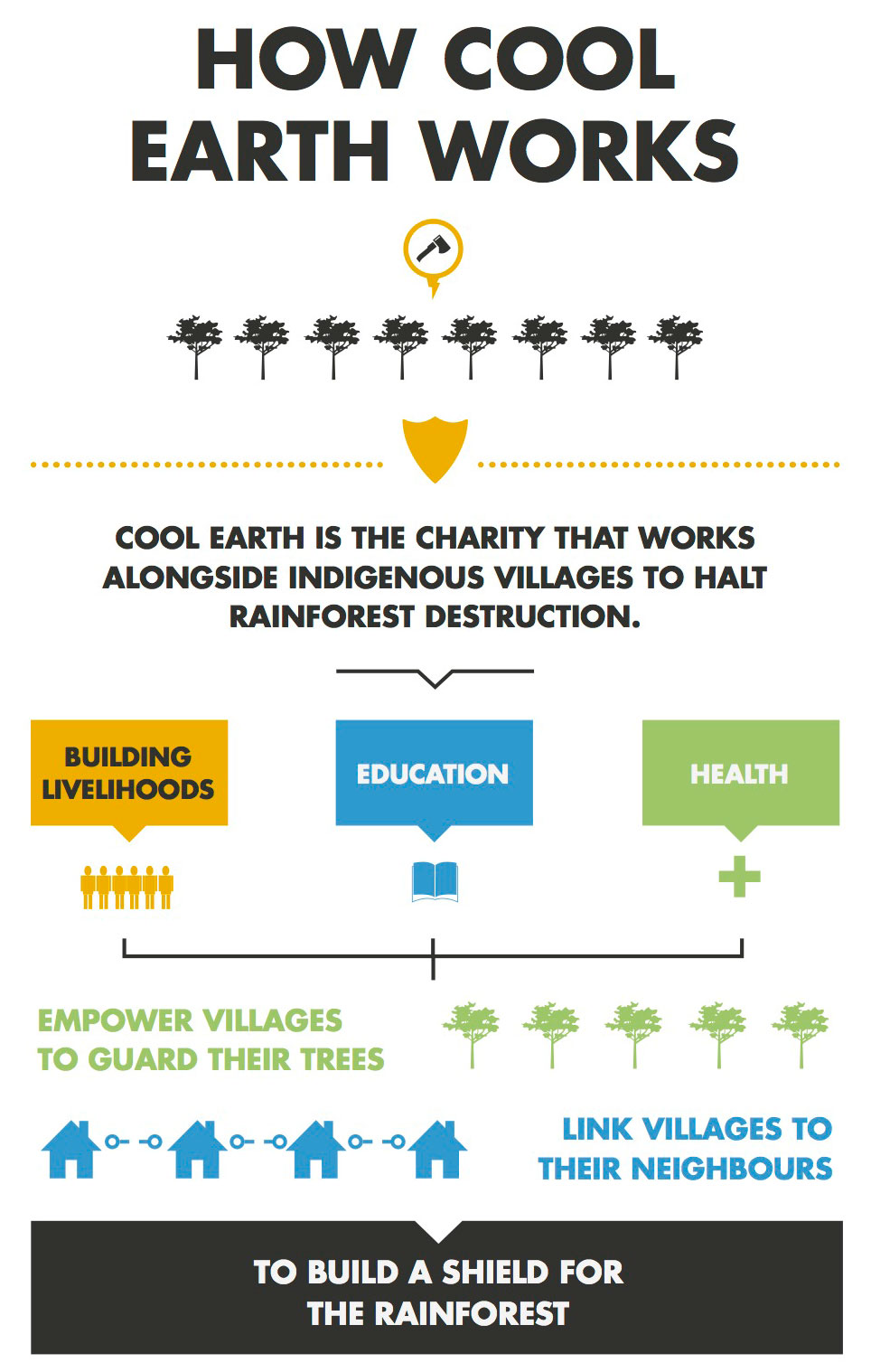It’s Back to School in the rainforest – Cool Earth
The charity Cool Earth explains what schools have got to do with saving the rainforest.
It’s that time of year again and there’s just as much excitement about the new term in our
rainforest classrooms. Everyone arrives early for a quick game of volleyball or soccer, even if
this means setting off from home the day before.
Even when the classrooms have no walls and dirt floors that turn into muddy swamps in the rains,
every parent is anxious to get to their children through school. Unfortunately, a proper education
in remote rainforest villages is not high enough on government to-do lists. In Peru, Papua New
Guinea and the Congo, rainforest schools lack books, pencils and even desks and chairs.
“Here there is no support from the State. For several years we have been asking the Municipality
for more infrastructure, but nothing happens.”
Carina Sarmiento, teacher at Cutivireni School, Peru.
It’s not unusual for children to go to school in shifts or have classes just twice a week, such is
the shortage of space.
This is terrible news for children and the rainforest. Without the means to read the agreements
pressed on them by loggers, how can villages know what they are committing themselves to? Or assess
the value of an extraction contract? Or the impact of a new logging road?
No education leaves rainforest villages vulnerable to exploitation. This is why Cool Earth spends
more on schools than just about anything.
In Cool Earth’s Ashaninka Project in Peru, we’ve already helped build or extend seven rainforest
schools, fund schoolbooks and even start a scholarship programme for further study in the nearest
town. We’re also working hard to make sure the best teachers get the help they need in a tough
environment.
“Pamaquiari are really lucky, and I am as a teacher. Our facilities are useful for the whole
village. It is fantastic, because of the income from the avoided deforestation project with Cool
Earth, I have the support which other communities do not, and this is why I wanted to teach here.”
Rosa Cuba, teacher at Pamaquiari School.
Support for education doesn’t stop at the classroom door. Max is from the village of Cutivireni,
the largest village in our Ashaninka Project. He is doing well at school and asked his parents for
a torch so that he could read in the evening. In the tropics the sun sets suddenly at 6pm. It’s
like a light being switched off. We want to provide a solar light for every schoolchild in our
Ashaninka Project to help children like Max keep up with their homework.
Please donate £15 to give a solar light to a school child in Peru
Education not only transforms the future of a family, but the whole community.
“I think of Cool Earth as a partner and the support they have given is invaluable.” Carina
Sarmiento.





No comments yet